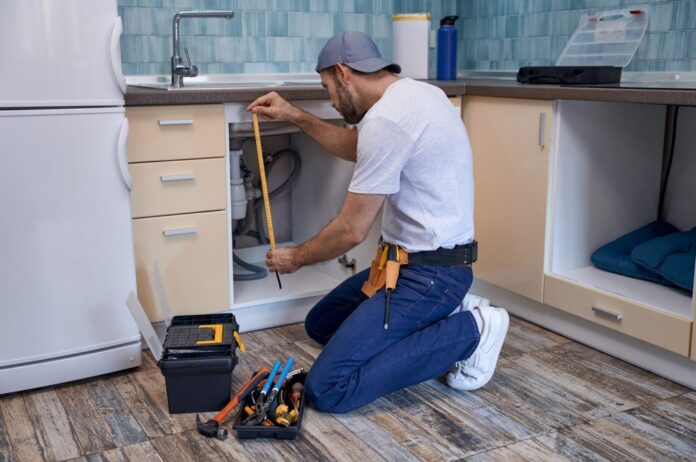Learning how to maintain and repair your home from the ground up is an invaluable skill that will pay off for you now and in the future. After all, when you own a home, it’s not just a place to live—it’s an investment. Understanding the ins and outs of upkeep will save you money down the road and help your home increase in value. Get started on these DIY maintenance tips today.
Foundation Repairs
When you’re inspecting your home, look for signs of foundation issues — a soft spot in the yard, broken or cracked boards, or a crack in the side of the home. If you see any of these signs, getting the foundation repaired or inspected as soon as possible is best. Depending on the severity of the foundation issues, foundation repair will cost anywhere from $5,000 to $50,000 or more. If you’re buying a home with foundation issues, ask the seller if they will cover the repairs. If not, you may need to get a home equity line of credit (HELOC) or take out a second mortgage on the home to pay for the repairs.
HVAC and Duct Maintenance
HVAC systems typically last 10-25 years with proper maintenance. If you’re buying a home with an older system, you may want to replace the system so you can start fresh with full knowledge of the system’s age and status. Annual maintenance to keep the ducts clean and the system inspected, cleaned, and tested will prevent problems, as will repairing or replacing components as soon as you discover a problem. You may want to schedule maintenance yearly to review the cooling and heating systems together. You may also choose to schedule maintenance twice a year, to have the cooling system checked in the spring and the heating system checked in the fall. Checking each system just before its use will prevent unpleasant discoveries when you’re ready to turn it on.
Decide on a Paint Color and Paint Inside and Out
When deciding on paint colors, paint samples can be deceiving — it’s best to paint a large wall or the outside of your home to get a true sense of the color. Before you start painting, ensure you have the proper painting supplies. This includes paint, brushes, rollers, drop cloths, and ladders. Also, use painter’s tape to tape off areas you don’t want to paint and protect floors and furniture from paint drips. If you’re painting the exterior of your home, keep an eye on the weather and choose a week when there are clear, slightly cooler temperatures with low humidity to allow you the most time to paint and for the paint to dry before rain, snow, or other bad weather arrives.
Window Repairs
If you own older windows, they may need repair. First, make sure they are operational. Next, check to see if they are drafty. If you notice rot or broken pieces in your window frames, it may be time to repair or replace them. Replace windows if they are single-paned and unsuitable for retrofitting or repairing. You can also repair your old windows if they are double-paned.
Repair and Replace the Roof
Make sure to periodically check your roof for damage, paying special attention to the shingles. If you notice any damage, get it repaired or replaced as soon as possible. It’s best to hire a professional if you notice that the damage is extensive or if you don’t know how to repair it properly. You can also inspect your roof for signs of rot. If you find rot, check the rest of the roof to see if other areas are rotting and get it repaired as soon as possible because it can quickly spread.
Additionally, for homes with solar panels, it is important to regularly clean them. Dust, debris, and bird droppings can accumulate on the panels, reducing their efficiency. You can use a soft brush and a hose to gently clean the panels, but be sure to avoid scratching them. It’s also important to avoid using cleaning chemicals or abrasive materials, which can damage the surface of the panels.
Home maintenance can seem daunting, but there’s no need to be intimidated. These DIY maintenance tips will get you started on the right foot. Before you know it, you’ll have a regular maintenance routine down, and your home will stay in great shape.















